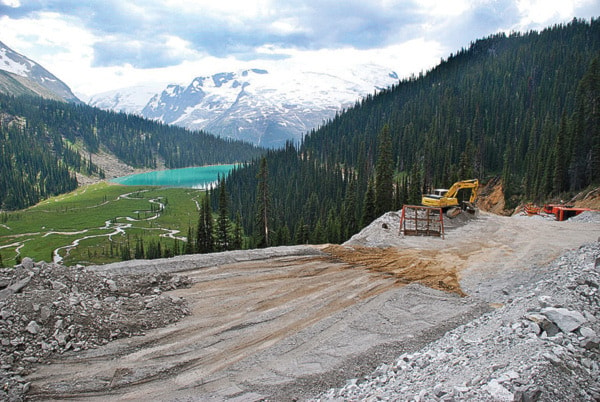Neskonlith Chief Judy Wilson took an eviction notice to Imperial Metals in Vancouver but never made it off the ground floor.
The notice seeks to bar Imperial Metals owners, employees, insurers and investors from the Ruddock Creek mine site high above the headwaters of the Adams River – land the Shuswap Nation claims to own under aboriginal title.
Wilson says the “catastrophic breach” of the company’s Mt. Polley tailings pond, proves the Imperial Metals does not have proper risk management policies in place.
It was a message the chief wanted to deliver to company officials first hand, but she arrived at the company’s Vancouver office last Thursday to discover access blocked by locked stairwells and elevators.
Gordon Keevil, Imperial Metals vice president of corporate development, called the incident an unfortunate set of of circumstances based on miscommunication. He said there had been a number of protests following the Mt. Polley incident and building and management made the move for employee security.
In terms of the federal government’s decision to forego an environmental assessment at Ruddock Creek in favour of a single provincial assessment, Keevil says the decision was to try to eliminate duplication.
“At the end of the day, the federal government has to sign off on it,” he says. “They have to review it; it’s not a complete walk away.”
Keevil says some $50 to $60 million has already been spent in an environmental process that has just begun and is expected to take another two to three years.
“We’re very aware of the high level of sensitivity; we know that unless it mitigates all the sensitivity, it’s not going to go,” he said, claiming the mine will be a much smaller operation than Mt. Polley.
Keevil says the company has been in consultation with four First Nations bands affected by the mine – Adams Lake Indian Band, Little Shuswap, Neskonlith and the Simpcw First Nation in the northern part of the Shuswap.
“We’ve been talking to them all the time; not so much with Neskonlith,” he said. “That requires a two-way street in consultation.”
“Let’s be honest, what happened was an accident and while we can’t give anyone a 100 per cent guarantee, we’re doing all kinds of work in support of the permitting process,” he said.
“Everything we do is in the context of where we are – we know the sensitivity, we know the hurdles.”
